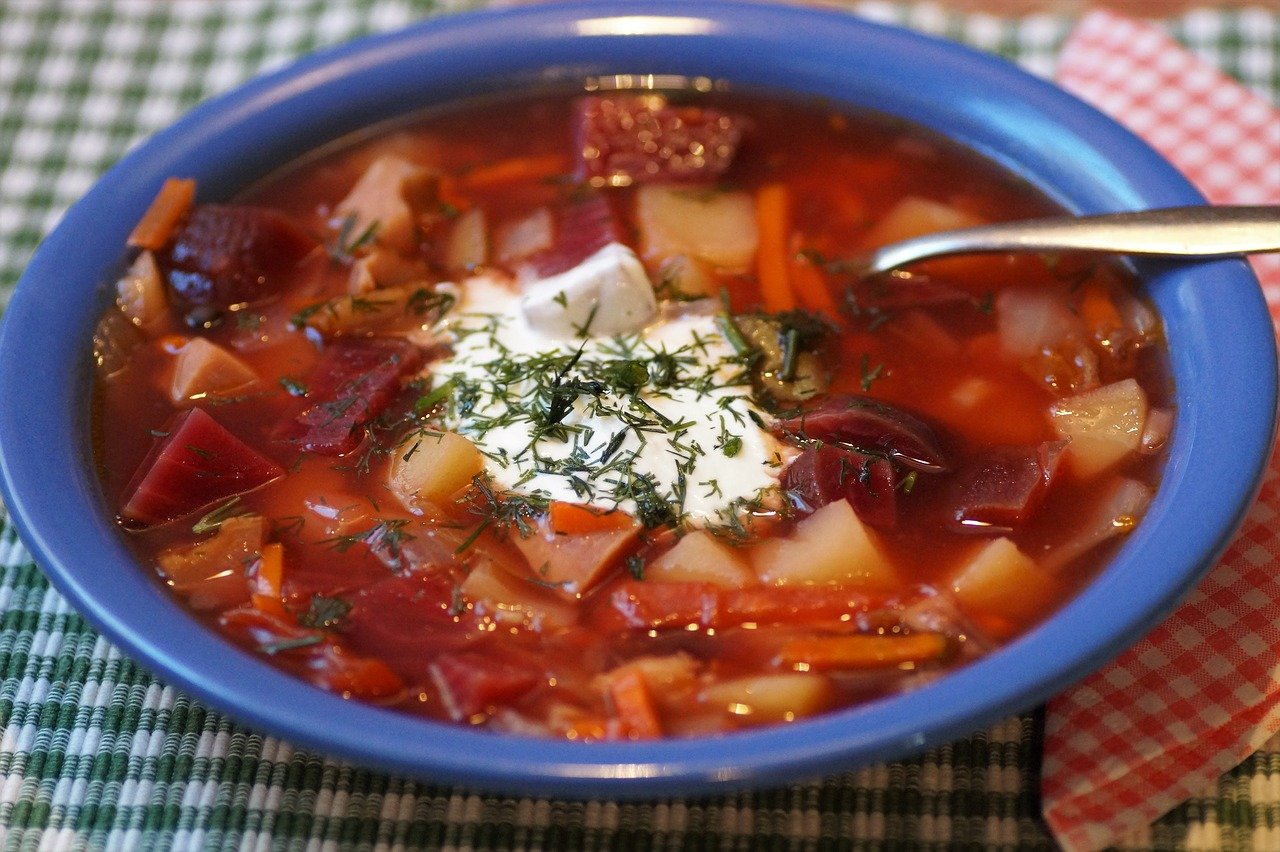Spices are powerful ingredients in the culinary world. Different combinations of spices can bring different flavors that mark the people who enjoy regional cuisines and culinary traditions. Russia is no different. A Russian seasoning is bound to make your mouth water like other seasonings in Europe. A Russian spice blend will make Russian migrants feel that they are right at home. Russian food culture is so diverse that the world needs to know how Russians use spice to make their food special at home. If you want to know how Russians cook on this side of the world, you are in luck, because we will introduce to you many spices that are commonly used in Russia. You’d be surprised that Russian spice names aren’t hard to master, either. You can start making Russian food at home with incredible confidence starting today because you know how the seasonings work.
At the center of Russian cooking are soups. There are staple soups in this region, such as the rassolnik, ukha, and shchi. There are chilled soups made with kvas; these include the botvinya, the okroshka, and the tyurya. There are also stews and light soups made largely with vegetables and water. Let it be said that Russians also enjoy different kinds of noodle soups. Noodle soups are often prepared with milk, mushrooms, and meat. Nothing says “Russian” more than cabbage-based soups, though these can be loved by anyone regardless of what region they are from.
Russians also prepare lots of porridge. The generic term “kasha” refers to porridge in general, though porridge can be made with various ingredients, including rice and buckwheat. Russians often add jams and sugar to their porridges and, let’s not forget, fruits.
- Dill – Dill is a favorite spice when Russians prepare food that involves different kinds of fish with milk. Dill is also used for pickling, and herring, which is the most pickled fish in Russia, has dill as its core spice. The main advantage of using dill is it grows fast, it can be purchased anywhere, and it grows all year healthily in Russia. If dill is allowed to develop seeds, it’s unstoppable as a plant, too. This is a bonus for people who use lots of dill in their food in the first place. Dill is also dried and jarred for the wintertime. Between fresh dill and dried dill, Russians prefer fresh dill because they are more robust and vibrant if you are using fresh dill.
- Parsley – Parsley has a fresh, almost citrus flavor profile, making it awesome for just about any dish. In Russia, where it’s cold nearly year-round, many types of parsley grow healthily. If you want to plant parsley, do not transplant it and if possible, grow it directly into the ground or the pot. Before the first frost arrives, you should evacuate your parsley pots.
The most notable Russian dish that has parsley at the center stage is the Borscht soup. If you don’t have parsley, use dill if you are working with a Russian recipe as they use these two interchangeably. - Chervil – The chervil is related to the parsley. They also call this herb the “French parsley.” Russians like the mild hint of licorice, which combines the flavor profiles of parsley and tarragon. Chervil is often added to dishes that have eggs at the center. You can also use chervil as an additional fresh herb when a Russian recipe calls for one. For instance, roasted purple potatoes taste much better with chervil. You can also use chervil as a substitute if you lack tarragon in the kitchen? It is truly a very convenient herb and spice.
- True tarragon – True tarragon provides a strong flavor that works well with a variety of Russian recipes. Recipes that require a fresh herb to be mixed with some mustard or vinegar work well with true tarragon. If you love anise but don’t like the real thing’s potency, you will find slight hints of anise in true tarragon. What’s interesting here is people associate the use of true tarragon with the Caribbean. However, history does show that true tarragon appears to have been used first in Siberia.
- Garlic – The versatility of the common garlic is also well-loved in Russian cuisine. Russians store garlic in various ways, especially before the winter, to enjoy it year-long. A garlic scape is extremely popular in Russia and is a top method of preserving garlic. Russians love garlic because it is aromatic and rich, and it lends its flavor profile well to a variety of dishes. Mustard vinaigrette wouldn’t be the same without additional garlic, so it’s great that you have some at home. Be sure to add enough garlic when preparing Russian dishes like lamb pilaf. Dishes that call for baking mushrooms with added sauce will also fare well with fresh garlic. Don’t go easy on the garlic, period.
- Horseradish – Also called the “hron” in Russia, is often made into a tangy and flavorful relish used for meat dishes. The hron is often paired with the kielbasa, a type of sausage that hails from Poland originally. The kielbasa has a coarser texture, and it is just packed with lots of garlic that it will make you heady with the flavor. Kielbasa is often smoked as a method of preservation.
- Ginger – Like garlic, ginger is omnipresent throughout Europe, and it is a versatile spice for many recipes in the Russian culinary tradition. Whether you are cooking lamb, pork, or chicken, ginger is always useful.
- Onion – Russia shares its love of onions with the rest of the world. Dishes that are paired with bread and stews and meat dishes are all flavored with garlic and onions. Even pan-fried potatoes are paired with some sweet onions because it just feels right.

